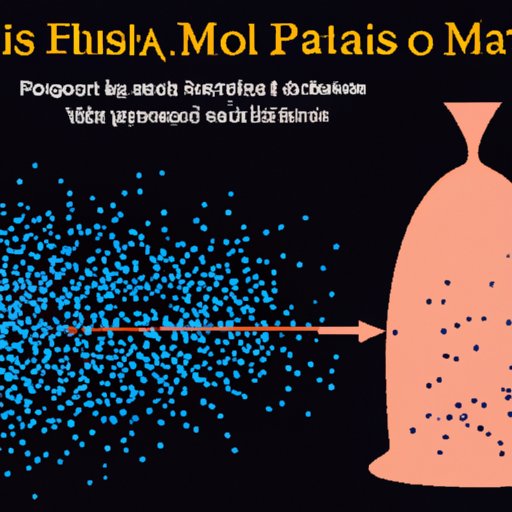Introduction
In the world of modern physics, particle mass plays an essential role in our understanding of the universe’s physical laws. The study of subatomic particles has revealed that some particles have mass, while others do not. In this article, we will explore which particle has the least mass and why this is important in modern physics.
What are Fundamental Particles?
Fundamental particles are the smallest units of matter currently known to exist in the universe. They are not made up of any smaller parts but instead serve as the building blocks of all matter. There are two types of fundamental particles: particles that make up matter, called fermions, and particles that mediate interactions between fermions, called bosons.
Why is Particle Mass Important in Physics?
Particle mass plays a crucial role in modern physics. It affects the way particles interact with each other and with their surroundings. A particle’s mass determines its energy, the strength of its interactions, and its behavior in magnetic and electric fields.
Furthermore, the discovery of the Higgs boson in 2012 revealed that mass is fundamental to the existence and structure of matter. The Higgs boson is responsible for giving particles mass, and without it, all particles would move at the speed of light, making the universe very different from what we see today.
A Brief History of Particle Mass Discoveries
Scientists have been studying particles and their mass for decades. One of the first particles discovered was the electron in the late 1800s. It was the first subatomic particle to have its mass measured.
Since then, scientists have discovered many more particles, such as protons and neutrons, and even smaller particles, like quarks and leptons. They have also discovered antimatter particles that have the same mass as their matter counterparts, but with an opposite charge.
What is the Least Massive Particle?
The least massive particle currently known to exist is the neutrino. Neutrinos are elementary particles that are neutral and light. They were first theorized in the 1930s and were only detected experimentally in the 1950s. Neutrinos are among the most abundant particles in the universe, but they are also the most elusive.
Their mass is so small that it is challenging to measure accurately. However, recent experiments have proved that neutrinos do have mass, but it is still not clear how much. Scientists estimate that the mass of a neutrino is at least a million times smaller than the mass of an electron.
Implications of the Least Massive Particle
The discovery of the neutrino’s small mass has significant implications for modern physics and our understanding of the universe. For one, it suggests that there is still much we do not know about the nature of matter and how it interacts with other particles.
Additionally, the discovery of the neutrino’s mass has opened up new avenues of research. Scientists are studying neutrinos to learn more about the evolution of the universe, including the role they play in supernovae and the formation of the cosmos.
Finally, neutrinos could be a vital tool for unlocking some of the universe’s biggest mysteries, like dark matter and dark energy. The study of neutrinos could help scientists determine the location of these invisible substances and better understand their properties and effects.
Conclusion
The study of particle mass has been a crucial part of modern physics for over a century. The discovery of the least massive particle, the neutrino, has opened up new avenues of research and provided a new tool for studying the universe.
As we continue to explore the nature of matter and the properties of subatomic particles, the study of particle mass will remain an essential aspect of modern physics.
